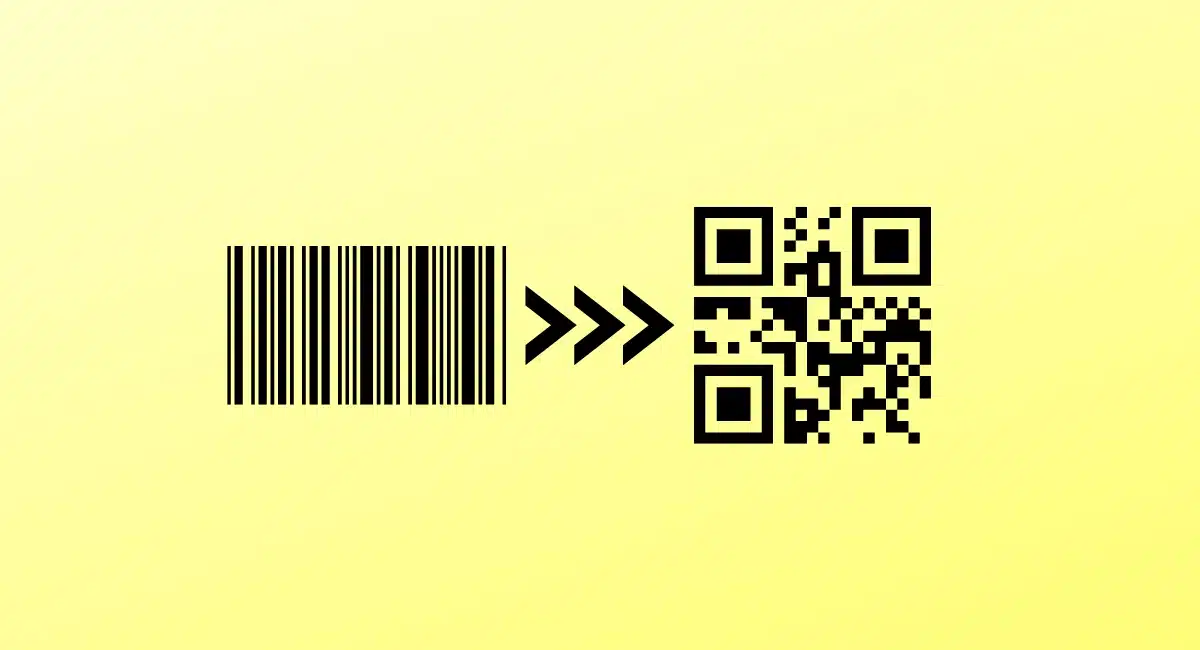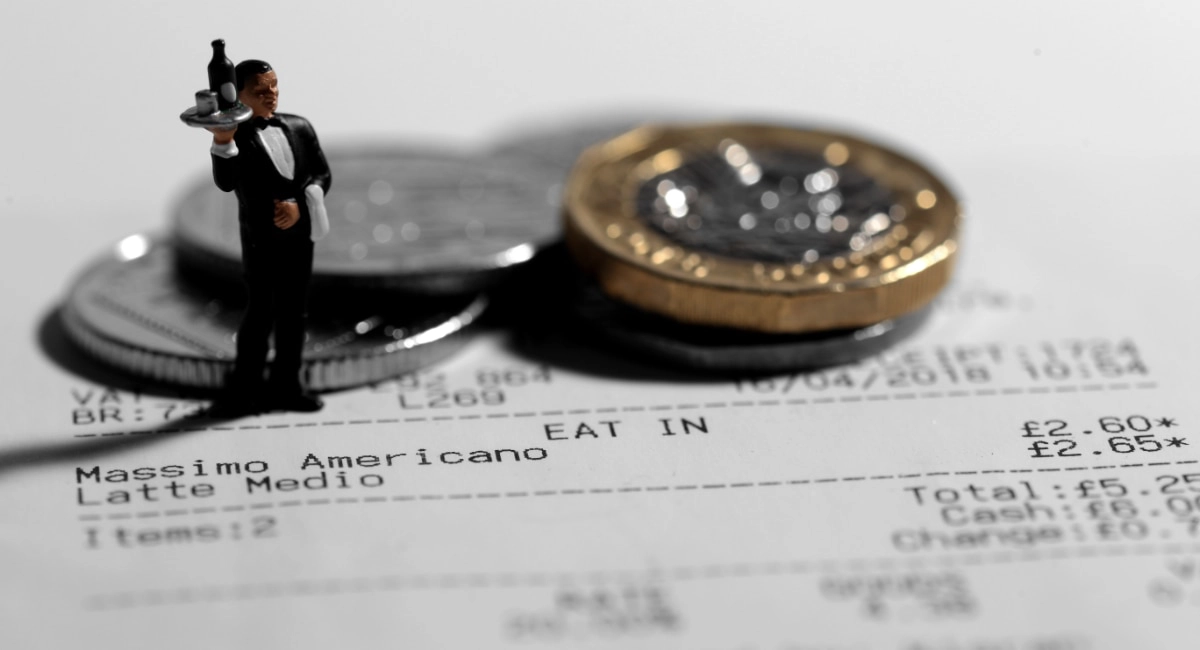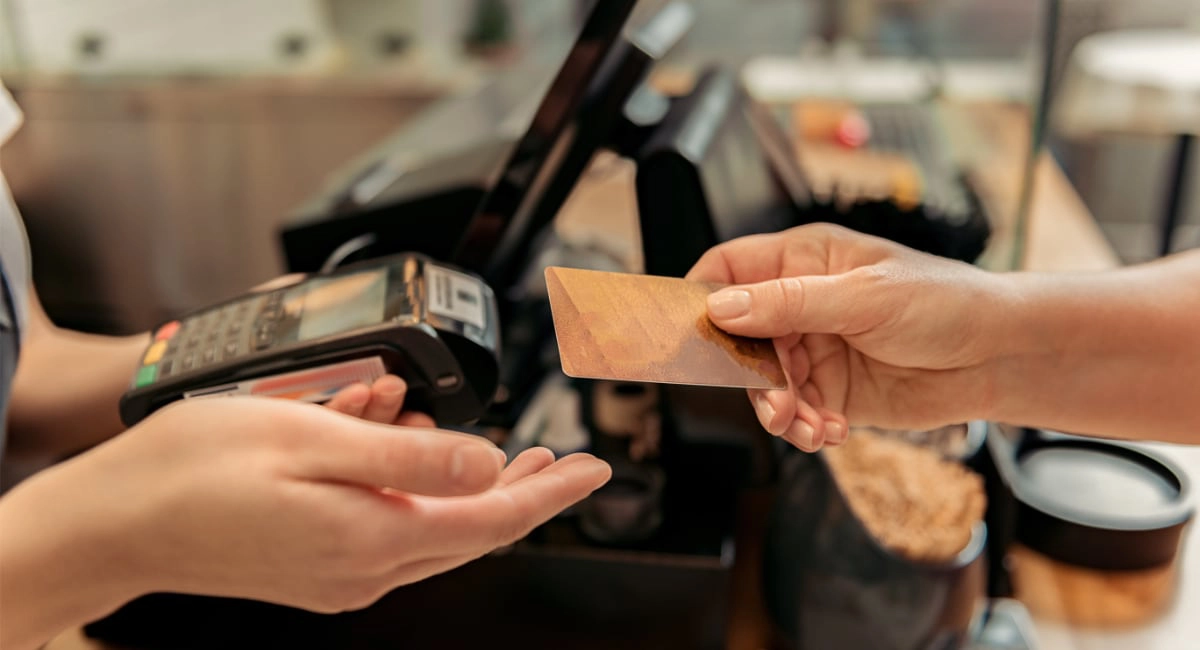Not only have QR codes been useful for ordering in restaurants, they are now also set to spread in retail over the next few years.
Consumers and shops alike are used to the stripy barcode that’s scanned when purchasing a product. This has been around for about 50 years. But evolving demands around the world have prompted the organisation behind the barcode, GS1, to change tack and replace them with QR codes.
Let’s get into the reasons behind the switchover, how it will happen and what retailers should expect in the UK.
Differences between a barcode and QR code
First, let us look at what the codes are and their main differences:
1D (linear) barcodes have a row of vertical stripes (‘bars’) of varying widths representing a long number when scanned. Each barcode:
- Has a Global Trade Item Number (GTIN) identifying a product.
- Is universal and can be scanned in different countries.
- Require a 1D barcode scanner to read.
2D (QR) codes are square-shaped (2-dimensional) codes of little shapes linked to data or a web page when scanned.
- Out of all 2D code types, it is QR (Quick Response) codes that will link to products.
- They are read with a 2D scanner or smartphone with a web browser.
- Product producers can update the link’s web page any time.
So, linear barcodes can only be scanned by retailers and contain fixed and limited information about each type of product. In contrast, two-dimensional codes can be scanned by both retailers and customers, contain lots more data and link to a dynamic web page that can be adapted.
Why change to QR codes?
Changing the way retailers process products is no small deal. But there are now several reasons why QR codes are beginning to look better than barcodes.
For one, new packaging laws in the European Union (EU) require specific labelling information that a QR code can address. France and Italy have already responded to this in January 2023 by requiring all brands sold in their countries to share sustainability and recycling information on packaging.
This is just the start. From December 2023, the EU will also make it a requirement for wine merchants to include allergens, ingredients and nutritional information on all labels of wine sold in the EU. The US is likely to replicate this in their own regulations.
These rules aren’t aimed at the UK per se, but they do require everyone selling to the EU to only sell products that meet these criteria.
An added benefit of QR codes is the space freed up on labels. If manufacturers don’t need to print certain information when the QR code provides it digitally, it can reduce the amount of packaging, i.e. labels and user guides can be smaller and simpler. Cutting packaging makes companies more sustainable, with fewer materials needed and less wasted.
It does require customers to rely on their phones to look up information, though, which not everyone can do easily. Furthermore, the EU still requires certain information on labels, but more can be added with a QR code.
In general, retailers and brands benefit from the flexibility of QR code pages. They can add promotions, up-to-date company details, social media links and anything to keep customers loyal, informed and confident with their purchase.
To compare, a paper label with a barcode can’t update itself when contact details, recycling information and competitions change. Barcodes certainly do nothing to change the language of written information to the local country’s.
In response, GS1-US is leading the way in transitioning from barcodes to a QR code labelling format. This initiative is named Sunrise 2027, since year 2027 is the deadline for implementing the changes.
GS1-US says that “at a minimum, price lookup systems need to be able to use the Global Trade Item Number (GTIN) encoded in 2D barcodes” by that time. The organisation acknowledges that moving the industry forward to 2D codes only is a multi-step process involving many parties such as brands, manufacturers, retailers, POS software and hardware providers, and warehouses.
GS1-UK will adjust to the changes, but does not lead the initiative and hasn’t advertised it in the same way to UK merchants.

What are the implications for retailers?
So how are these changes affecting UK retailers on a practical level?
For a start, it’s not yet a fixed rule to include QR codes instead of barcodes. In fact, most retail POS systems in the UK still only recognise 1D barcodes to look up pricing and product information on the till and integrate with barcode scanners that read them. A dual approach of showing a 1D barcode next to a 2D code would therefore be necessary to implement the new system.
Still, GS1 in the US is collaborating with the retail industry to make sure all retail POS systems globally work with the new 2D barcodes by 2027. When that’s in place, retailers will be able to ditch barcodes completely (if they want to) and only scan QR codes from 2027 onwards. Perhaps at that point, local country regulations will require shops to do this by law. Alternatively, retailers might still be allowed to use barcodes, as long as the till is still compatible with it.
Retailers will be able to ditch barcodes completely (if they want to) and only scan QR codes from 2027 onwards
Until then, there’s no rush for UK retailers to change any labelling, as long as they only sell domestically or to countries outside of the EU.
If selling to the EU, merchants must comply with the new packaging regulations applicable there.
The UK branch of GS1 generally encourages businesses to future-proof themselves by introducing 2D barcodes. Retailers can generate them through Buyerdock (the only UK provider of 2D barcodes), linking to the relevant EU packaging page to comply with EU regulations automatically.
Basically, scanning a product’s QR code with a smartphone opens the destination URL on the phone, showing country-specific information alongside a barcode number/GTIN and stock keeping unit (SKU).
Product brands can also add their own information like promotions, product recalls and tailored content. This enables retailers in the UK to sell to the EU without having to change the physical label – they just need to include the QR code.
At the till, shops generally still process items by scanning the stripy, old barcode. As long as your POS system can do this, you don’t have to change anything yet in store, but it might be an idea to invest in a 2D barcode scanner (if your till works with it) to prepare for the day the 1D barcode becomes outdated.




